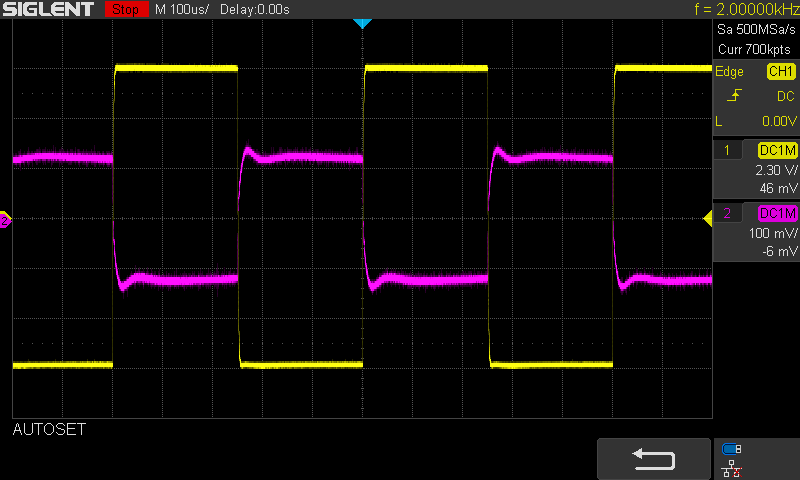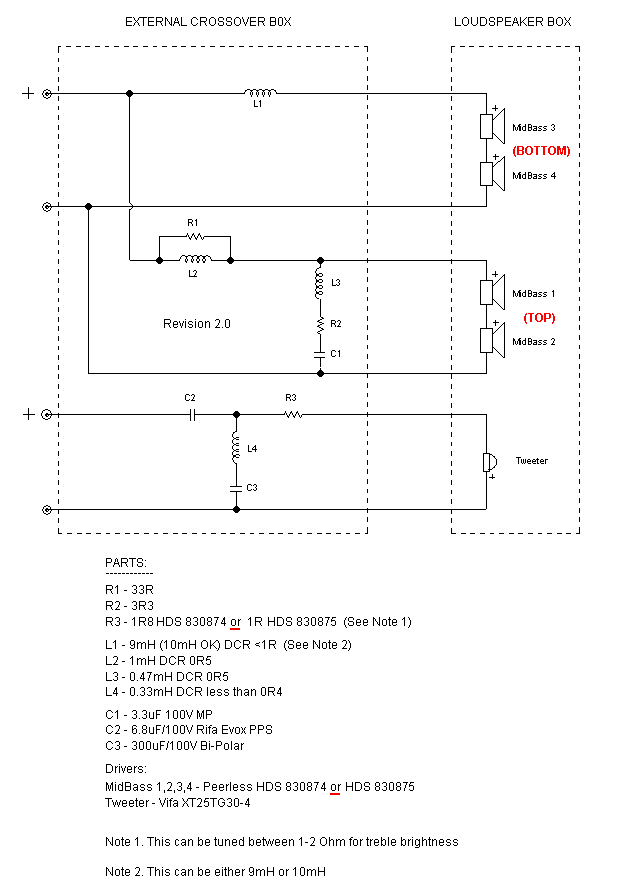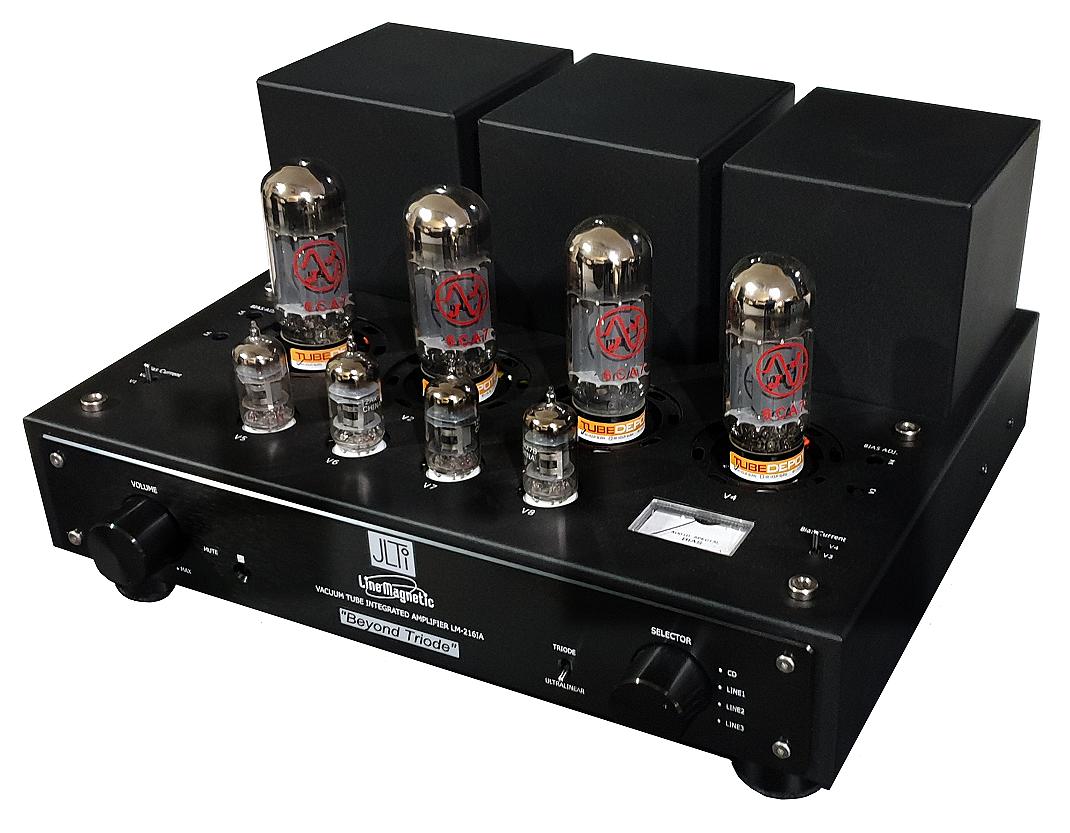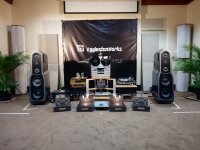I've tried to search the thread but came up empty. Does anyone have a CNC file for the boxes of the EL6 ? or can someone direct me to the right post. Thanks.
Try this and let me know if that fits the bill:
ElsinoreCADandRelatedFiles.zip
Last edited:
Perfect....thanks Joe. Collecting parts and ordered a pair of waveguides. Thanks!
So as I work my way through this process I had a question on an amplifier I bought just before discovering the Elsinores. Its a Classe Sigma 2200I integrated class D amp. Its rated at 200w @ 8 ohms and 400w @ 4 ohms.
I know these speakers are very efficient and seem to be able to be driven quite easily. I'm still in the return period on this amp and the tube amps have caught my attention. Any thoughts on whether I should just roll with the Classe or maybe return it and look for a Tube amp? This is more than likely a 2 channel listening room mainly with CD's and streaming from my laptop and iphone.
I do like the idea of adding a subwoofer later if I feel the need but by all the reviews it's probably not necessary.
Edit....on another note if any one has 8 SB17NRXC35-8 drivers (maybe you changed your mind) I'd be interested in buying them.
I know these speakers are very efficient and seem to be able to be driven quite easily. I'm still in the return period on this amp and the tube amps have caught my attention. Any thoughts on whether I should just roll with the Classe or maybe return it and look for a Tube amp? This is more than likely a 2 channel listening room mainly with CD's and streaming from my laptop and iphone.
I do like the idea of adding a subwoofer later if I feel the need but by all the reviews it's probably not necessary.
Edit....on another note if any one has 8 SB17NRXC35-8 drivers (maybe you changed your mind) I'd be interested in buying them.
Last edited:
-yes, you can do better than the integrated Classe..
Oddly I'm not recommending a Tube solution here.. (..though I'd probably like a good SET buffer in addition to what's seen below.)
Items I'd look closer to:
Soekris Engineering ApS, Products dac1321
..and monobloc version (x2):
Amp Camp Amp – diyAudio Store
Oddly I'm not recommending a Tube solution here.. (..though I'd probably like a good SET buffer in addition to what's seen below.)
Items I'd look closer to:
Soekris Engineering ApS, Products dac1321
..and monobloc version (x2):
Amp Camp Amp – diyAudio Store
@Pilk
i search your amplifier price $5.5k is already high price, imagine this budget for diy amplifier that are available in this forum from class a, class ab or chipamp. you already choose diy speaker, you need to get into diy amplifier too
my amplifier inventory includes 2 firstwatt clone, SIT L'amp which are class a, 1 gainclone with far less than your amplifier cost
regarding NRX drivers that you're looking for, i suggest just use MFC type since this is already endorsed by Joe and the schematic crossover is also provided. why bother with discontinued drivers?
i search your amplifier price $5.5k is already high price, imagine this budget for diy amplifier that are available in this forum from class a, class ab or chipamp. you already choose diy speaker, you need to get into diy amplifier too
my amplifier inventory includes 2 firstwatt clone, SIT L'amp which are class a, 1 gainclone with far less than your amplifier cost
regarding NRX drivers that you're looking for, i suggest just use MFC type since this is already endorsed by Joe and the schematic crossover is also provided. why bother with discontinued drivers?
The MFC has slightly higher non-linear distortion (and a bit higher still at lower freq.s), but counters with better linear performance at high freq.s..
IMO the MFC is sort of a "poor-man's" Audio Technology driver, which is a good thing.
IMO the MFC is sort of a "poor-man's" Audio Technology driver, which is a good thing.
..diy amplifier that are available in this forum from class a,..
A pair of those Amp Camp Amps should be an easy build as well.. (while also having much better sound). 🙂
Last edited:
Actually, because the input is balanced on the monoblock ACA, I'd select the board and do a balanced tube pre-amp.
Soekris Engineering ApS, Products dam1021
Soekris DAC-s dac1101 and DIY dam1021
Last edited:
..a balanced tube pre-amp.
Not cheap, but it uses 6sn7's which with a good circuit sound excellent:
Schiit Audio: Audio Products Designed and Built in California
passive crossover is still a mistery to me, i have been looking at so many 3 way design and i find xo arrangement is complicated. i just pushing my self to understand Elsinore xo, so here is what a newbie find:
- all 1st order implementation with some frequency adjustments
- tweeter : R1 for attenuation, C1 as 1st order hpf, with additional zobel and notch filter
- top midbass very clear only get L2 as lpf, where bottom mibass L1 as lpf and 2 points of notch filter
as i build FAST which utilize super tweeter, i never thought simple 1st order can be implemented in multiway. bravo 😉
- all 1st order implementation with some frequency adjustments
- tweeter : R1 for attenuation, C1 as 1st order hpf, with additional zobel and notch filter
- top midbass very clear only get L2 as lpf, where bottom mibass L1 as lpf and 2 points of notch filter
as i build FAST which utilize super tweeter, i never thought simple 1st order can be implemented in multiway. bravo 😉
The 6R8 and 0u47 capacitor near the tweeter are not part of the crossover. Neither are L4, L5, R2, R3, C3 and C4.with additional zobel
The 6R8 and 0u47 capacitor near the tweeter are not part of the crossover. Neither are L4, L5, R2, R3, C3 and C4.
then what are they?😕
These are to change how the speaker appears to the amplifier. You may have heard Joe mention these will work well with any amp, tube/valve, current amps.
then what are they?😕
That is actually a very good question.
These are to change how the speaker appears to the amplifier. You may have heard Joe mention these will work well with any amp, tube/valve, current amps.
That is certainly part of it.
The key here is to cause the amplifier to produce the same current at all times. For example, if the amplifier produces a square wave on the voltage side, then it should also do so on the current side.
This is a 2KHz example with the Elsinores:

YELLOW is the voltage side of the amplifier and RED is the current side.
It also does something very similar on the acoustic side.
So we shall see a reasonable facsimile of a square wave (time domain) in the voltage, current and acoustic dB-SPL. Needless to say, there are no commercial loudspeaker that does this. I read every issue of Stereophile and read every review of every speaker plus John Atkinson's extensive measurement tests, which are more thorough than what anybody else does.
When I have brought up the topic and 'philosophy' behind the Elsinores on other threads, I have been viciously attacked because it seems that I am claiming something "new" and that seems a sin. A few of them have tried to get to me on the Elsinore thread, but you guys here have shielded me and they have not again persisted.
I am working on a discussion paper that proves that real audible distortions occur on the current side of the amplifier. In other words, and I have already proved this as has somebody else I know, that an amplifier can have two different distortion profiles at the same time: One on the voltage side and another on the current side. Because the driver makes sound using current (not voltage) that flows through the coil, this thought is highly provocative to some.
I have coined something called a "back-EMF impedance" and that has caused some to see red. But I have also passed it by several very knowledgeable persons, several of them are physicists and one of them a world renowned loudspeaker designer with a name that will be recognised by all of you. So I am not quickly shaken, even if the experience left a bad taste in my mouth.
The concept of "back-EMF impedance" in fact also works mathematically, the numerical value it gives me can be used to calculate the current and heat dissipation, as well as the phase shift between the voltage and the amplifier and most important the predicted change is the acoustic output of the driver, the so-called DB-SPL.
The fact that we shall be able to measure an actual distortion via a high-grade microphone (had to spend some serious money to get one) is the next step.
So yes, this will then prove that it is audible distortion and will put nay-sayers to silence their criticism. One has already indicated that he will do just that, so that is a positive thing.
But I have also received very appreciable support from so many, they know who they are and they know I am very grateful.
So yes, the Elsinore is a 'different' kind of speaker and there are reasons why I get emails and phone calls where they have compared the Elsinores to ridiculously priced speakers, some very famous brands indeed. I will leave that to your imagination. 😉
Cheers, Joe
Cheers, Joe
Last edited:
I visited our local audio show Iheac 2019 on last month where there were SonusFaber, AudioNote, Focal, JMLabs, MBL and many other high price brands but my favorite speaker during the show was Eaglestomeworks Viginti, that was really nice presentation.
when i read this post https://www.diyaudio.com/forums/multi-way/97043-elsinore-project-thread-241.html#post5690827 which compare Elsinore to Andra, then I think i'm on the right path
i still consider best xo is no xo so that's why i pursue active setup with minidsp to ensure direct connection from amplifier to drivers. but Elsinore impedance and phase measurement which has flat value seems promising 😀
when i read this post https://www.diyaudio.com/forums/multi-way/97043-elsinore-project-thread-241.html#post5690827 which compare Elsinore to Andra, then I think i'm on the right path
i still consider best xo is no xo so that's why i pursue active setup with minidsp to ensure direct connection from amplifier to drivers. but Elsinore impedance and phase measurement which has flat value seems promising 😀
Attachments
-yes, you can do better than the integrated Classe..
Oddly I'm not recommending a Tube solution here.. (..though I'd probably like a good SET buffer in addition to what's seen below.)
Items I'd look closer to:
Soekris Engineering ApS, Products dac1321
..and monobloc version (x2):
Amp Camp Amp – diyAudio Store
Will look into these suggestions...thanks Scott.
@Pilk
i search your amplifier price $5.5k is already high price, imagine this budget for diy amplifier that are available in this forum from class a, class ab or chipamp. you already choose diy speaker, you need to get into diy amplifier too
my amplifier inventory includes 2 firstwatt clone, SIT L'amp which are class a, 1 gainclone with far less than your amplifier cost
regarding NRX drivers that you're looking for, i suggest just use MFC type since this is already endorsed by Joe and the schematic crossover is also provided. why bother with discontinued drivers?
The thing about the Classe is that they are just selling out the last of their inventory (closed their doors in Canada a while back) and the 2200i was purchased for under $1500 so it was a snap decision. I was looking at DIY up until that point but the Classe just looked like an easy way out and relatively cheap.
I've always been a fan of paper cones and I was trying to avoid the nagging thought that I'd be missing something with the poly cones, even though reports from Joe indicate all is well. That said, I can see a problem if a driver goes bad and i'm scrambling for a replacement in a few years.
I'll probably end up going with the MFC.
Hi Joe Rasmussen,
I have heard many good things about this design and trying to learn about it.
I see that this is the schematic for the crossover. It doesn’t look like a first order transient perfect electro-acoustic design.

I was intrigued by your statement above that the acoustical side of the Elsinore can do square waves accurately.
Do you have some scope shots of microphone signals to show square waves or perhaps a derived step response from a REW (or equivalent) measurement?
I have been chasing transient perfect speakers for their super recreation of minimally post-processed live recording of drums and jazz ensembles.
Thanks in advance.
X
I have heard many good things about this design and trying to learn about it.
I see that this is the schematic for the crossover. It doesn’t look like a first order transient perfect electro-acoustic design.

I was intrigued by your statement above that the acoustical side of the Elsinore can do square waves accurately.
This is a 2KHz example with the Elsinores:

YELLOW is the voltage side of the amplifier and RED is the current side.
It also does something very similar on the acoustic side.
Do you have some scope shots of microphone signals to show square waves or perhaps a derived step response from a REW (or equivalent) measurement?
I have been chasing transient perfect speakers for their super recreation of minimally post-processed live recording of drums and jazz ensembles.
Thanks in advance.
X
Last edited:
- Home
- Loudspeakers
- Multi-Way
- The "Elsinore Project" Thread

